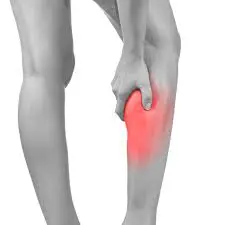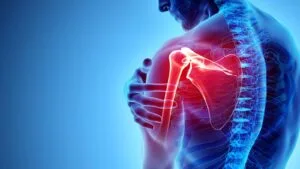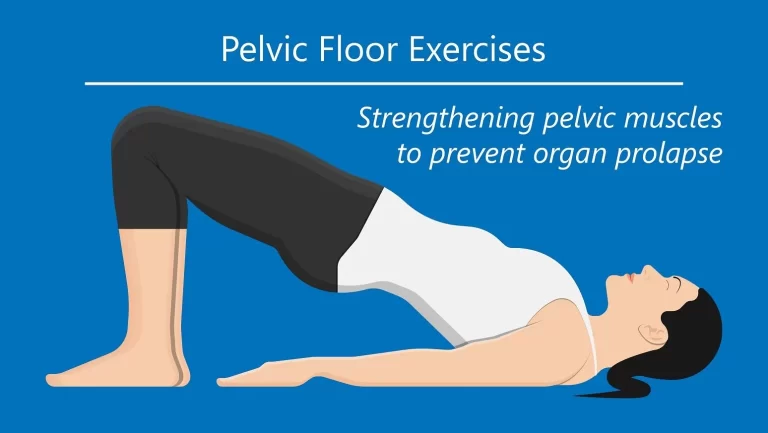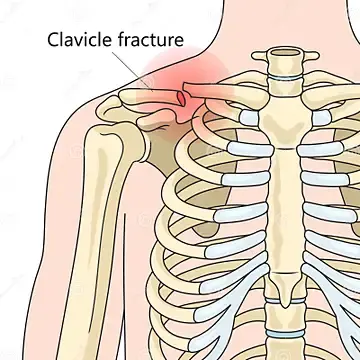Swollen Hands and Feet
Introduction
It’s not uncommon after a long day to notice your fingers feeling stuffed like sausages or your ankles resembling those of a cankle model. You slip off your shoes and are startled to see your feet ballooned up – they barely resemble their normal size and shape.
What’s behind this pooling of fluids in our hands and feet that causes such pronounced puffiness and swelling? While it may seem like just a cosmetic nuisance or a sign you indulged in too much salty food, recurrent or chronic swelling can indicate an underlying medical issue.
Swelling, also known medically as edema, occurs when fluid accumulates in the tissues and cavities of the body. Most commonly, this excess fluid collects in the feet, ankles, and hands due to the effects of gravity and anatomy that make it harder for fluids to drain efficiently from the extremities.
Acute swelling may arise temporarily from things like injury, heat exposure, medication side effects, monthly hormonal fluctuations, and dietary choices. However, swelling that persists, appears severe, or occurs alongside other symptoms can signal something more serious is afoot.
In this article, we will break down the wide range of causes, symptoms, risk factors, complications, diagnosis, and treatments for puffy, swollen hands and feet. While looking out for red flags, we’ll also provide proactive steps you can take to find relief when swelling strikes.
A few tweaks to your lifestyle paired with paying attention to warning signs can help you keep occasional swelling in check or determine when it’s time to seek medical advice. Let’s start by understanding exactly why our hands and feet sometimes rebel against us with fluid accumulation and inflammation.
Causes of Swollen Hands and Feet
Pregnancy
From the moment of conception, a woman’s body goes through remarkable changes. Skyrocketing hormones like estrogen and progesterone cause the expansion of blood vessels, directing extra blood flow to the uterus and placenta – sometimes at the expense of the hands and feet.
The compression of her growing uterus on other organs also slows down overall circulatory efficiency. In addition, nutrient and fluid intake rises significantly during pregnancy, upping a woman’s normal fluid volumes. The body’s attempt to share sustenance with the baby can result in overflow to the lower limbs. Most pregnant ladies welcome their swollen fingers and cankles as happy reminders of the baby growing inside.
Medications
One of the medication’s common side effects is influencing normal fluid regulation in the body. Corticosteroids like prednisone and cortisone powerfully reduce inflammation but they also tell the kidneys to hang onto salt and water. Non-steroidal anti-inflammatory pills (NSAIDs) like ibuprofen relieve pain but also constrict blood vessels and kidneys, allowing fluid to back up into tissues.
Medications for high blood pressure like calcium channel blockers widen blood vessels, lowering blood pressure but allowing fluid leaks into nearby tissue, especially the feet. Talk with your pharmacist or doctor about whether new prescriptions list edema or swelling as a potential reaction.
Heart disease
The heart is the pump of the body. When its chambers and valves grow damaged from high blood pressure or plaque buildup, the heart loses its effectiveness at keeping things moving efficiently. As circulation slows, blood gets backed up and fluid slips outward into nearby tissues like the feet and ankles.
Gravity pulls this excess fluid downward. Swelling often starts in the feet but can creep up to include the calves and hands if heart dysfunction is significant. Pay attention if puffiness corresponds with symptoms like shortness of breath, irregular heartbeats, or chronic coughing.
Kidney disease
Healthy kidneys constantly filter waste and excess fluid from the bloodstream. Kidney damage or disease upsets this fine balance causing fluid retention. Proteins and other vital nutrients start spilling out into the urine while needed fluid gets left behind in the body resulting in swelling. Hands or feet swelling may correspond with other kidney disease symptoms like changes in urination, fatigue, confusion, metallic taste in the mouth, or ammonia-scented breath.
Injuries/Surgery – Trauma from fractures and wounds or surgical interventions stir up swelling and inflammation as part of the natural healing process. Usually temporary.
Heat Exposure – Hot summer weather widens blood vessels bringing more blood flow towards the skin. Gravity causes fluid to drain down to the hands and feet.
Salt Intake – Consuming foods high in sodium causes the body to retain water, resulting in puffy extremities.
Standing Long Periods – Gravity naturally pulls body fluids downward towards the feet and ankles. Prolonged standing exacerbates this, starving limbs of circulating blood and nutrients.
In summary, there are a variety of reasons hands or feet can become swollen from underlying medical conditions, medications, injuries, lifestyle factors, and normal hormonal shifts. Paying attention to accompanying symptoms helps deduce the cause.
Symptoms
An accumulation of fluid in your tissues can produce swelling, which can occur anywhere on your body but most commonly affects your legs, feet, and ankles. Swelling is one of the symptoms of edema.
Swelling signs and symptoms include:
- A portion of your body feels bigger than it did the day before.
- The skin seems stretched and glossy over the enlarged region.
- walking becomes difficult if your feet, ankles, or legs swell.
- You might be having breathing difficulties or coughing.
- In the enlarged area of your body, you feel full or constricted.
- little discomfort or soreness where it hurts.
Swelling in hands, fingers, feet, and ankles – Edema most commonly settles into the hands and feet as fluid floats downward with gravity and accumulates in the furthest points from the heart. Swelling begins gradually and is often most noticeable in the evening and worst after long periods of standing or sitting still. Rings start to feel too tight. Wrist bones and knuckles fade into puffy mounds. Feet swell out of their usual shoes or stray indents stay put after socks leave lines and creases.
Tight, stiff, or heavy feeling – Skin stretches to accommodate accumulating fluid just under the surface giving a puffy, swollen appearance. Initially, edema builds in the extracellular spaces before leaking into tissues and cavities. As this fluid accrues, the hands and feet lose flexibility and elasticity. Simple movements become hindered as stiffness sets in and limbs feel generally heavy or weighted down.
Risk Factors
Age – The risk of edema grows as we get older. Factor in a lifetime of wear and tear on the heart, blood vessels, and organs that boost the odds of developing heart failure, kidney issues, and other common swelling culprits. Natural muscle loss with aging along with stiffer veins allowing fluid backflow also encourages pooling in the feet and ankles. An aging liver and kidneys also struggle to regulate fluid balance like younger models.
Obesity – Carrying extra weight stresses all organ systems, especially the heart. Obesity also increases the risk for high blood pressure and type 2 diabetes – additional precursors to swelling. Excess weight aggregates swelling by: 1) physically squeezing the kidneys, hindering filtration ability; 2) increasing circulation demands on the heart; and 3) increasing pressure on leg veins hampering fluid return from the lower limbs. Losing as little as 5-10% of body weight helps improve these factors.
Family History – Since swelling often correlates with heart, kidney, thyroid, or liver disorders, keep a radar up if close relatives have these health conditions. Genetic predisposition means you may also deal with related fluid issues. Enlist your doctor’s help with appropriate screening tests to catch potential problems early.
Sedentary Lifestyle – Moving and contracting leg muscles efficiently pumps fluid back upwards to the torso and heart. Habitual inactivity leaves legs stagnant and veins sluggish allowing fluid to sit and accumulate. Blood circulation also diminishes over time, encouraging swelling. Regular walking, ankle rotations, and foot exercises help stymie pooling fluid. Even sitting still, change positions often and flex/rotate ankles.
Complications
Decreased Mobility
As fluid accumulation stiffens the joints and tissues of the hands and feet, normal flexibility and mobility become hindered. Simple tasks like walking, climbing stairs, or grasping objects can become painful or challenging.
Swollen feet may struggle to fit into regular shoes. Firm, puffy hands have difficulty with fine motor skills like buttoning clothes or opening jars. If edema compresses nerves, tingling or numbness can also set in. Mobility loss leaves one more dependent on others for care and household tasks.
Skin Infections
Edema stretches the skin, making it tight, shiny, and more prone to cracking, especially on the feet and ankles. Cracked skin provides an entry point for bacteria leading to secondary cellulitis or fungus infection.
The pooled fluids provide a rich replication medium for microbes to thrive once skin integrity becomes compromised. Swelling also slows normal circulation, preventing immune cells from efficiently reaching infections to curb their spread.
Blood Clots
Poor venous circulation from chronic fluid accumulation and inactivity boosts the risk of blood clot formation, especially in the legs. When blood flow slows, platelets and proteins can abnormally lump together forming clots.
If a clot dislodges it can travel to the lungs, heart, or brain blocking critical narrow vessels – this phenomenon is called thromboembolism. Signs like calf pain, warmth, and redness signal a clot may be present.
Venous Insufficiency
Swelling from chronic venous insufficiency indicates damaged valves inside of leg veins that normally push blood up toward the heart. When these valves fail, blood pools in veins by gravity. Pressure builds up causing outward leakage of fluids into nearby tissues manifesting as puffy lower limbs.
This stagnant pooling also encourages the development of dangerous blood clots within the legs. A clot that dislodges risks blocking arterial flow to the lungs, heart, or brain.
Psychological Toll
Living with painful swollen limbs that limit function and change appearance can deeply affect emotional health and self-image over time. Depression, social isolation, and frustration are common without relief.
Seeking counseling helps process these feelings and regain coping skills and strength during the healing journey. Support groups connect people who understand the daily impacts of chronic edema.
Diagnosis & Tests
Physical examination – The doctor looks for visible signs of swelling in the hands and feet, pressing into the skin for depth of indentations. They feel for firmness or pitting of tissue, check the range of motion, inspect skin condition, take a full history of symptoms, and listen to the heart and lungs for abnormalities indicating heart failure.
Blood tests – Lab tests assess kidney function through levels of electrolytes, proteins, and waste products in the blood. Liver enzymes are checked for clues to improper protein production. Thyroid hormones should be evaluated for fluid control issues from hypo or hyperthyroidism. Complete blood count tests for anemia and nutrients.
Urinalysis – The kidneys filter the blood and produce urine, so urine content provides clues about how they are working. Color, concentration, amounts, and microscopic sediments offer insight into normal vs abnormal fluid regulation. The presence of proteins or red blood cells points to kidney malfunction.
Imaging tests – X-rays show bone placement searching for fractures and joint issues causing swelling. Ultrasounds use soundwaves to create images of soft tissues noting fluid build-up and diagnosing causes like blood clots. CT scans give cross-sectional 3D views of bone and tissue to pinpoint heart, liver, and kidney abnormalities.
Treatment & Management
Diuretics
Diuretics, sometimes called “water pills,” are medications that work primarily by making the kidneys excrete more sodium in the urine. Sodium causes the body to retain water, so getting rid of excess sodium leads to increased urination and less fluid buildup in tissues like the hands and feet.
Common diuretic types include loop diuretics like furosemide (Lasix) and bumetanide (Bumex), thiazide diuretics like hydrochlorothiazide (Microzide), and potassium-sparing diuretics like spironolactone (Aldactone). Diuretics provide effective relief but side effects can include dehydration, electrolyte imbalance, dizziness, and kidney problems.
Compression Stockings
Compression stockings and socks apply gentle pressure up the legs to stimulate blood and fluid movement out of limbs back towards the heart. This reduces gravity’s pull on fluids drifting down and pooling in the feet/ankles.
Gradient compression means more squeeze is exerted at the ankles than higher up the leg. This pressure gradient returns circulation from the farthest points helping prevent swelling onset. Compression gear helps mobility too by adding stability and structure to fluid-bogged-down areas.
Exercise & Movement
Muscle contractions efficiently pump fluid and blood through the lymph and vein systems. Walking, leg lifts, ankle rotations, and foot flexes/points are simple ways to activate drainage & circulation from the legs and feet to keep fluids moving.
Yoga elevates the lower half of the body to use gravity to your advantage. Even while sitting or sleeping, shift position frequently – move ankles, stretch legs, and wiggle toes. Consistent movement is key to countering a sedentary lifestyle.
Lifestyle Changes
Adopting healthy lifestyle modifications can significantly help reduce swelling episodes or keep mild occasional swelling from becoming more frequent and pronounced. Limiting dietary salt avoids fluid retention triggered by high sodium.
Losing excess weight lowers strain on the heart and kidneys while improving vascular function. Refraining from sitting or standing still too long gives fluids a chance to redistribute. Elevating the legs/feet while resting enables gravity to naturally drain liquid away from edema-prone areas. Compression socks while flying prevent swelling from immobile long hauls. Lifestyle tweaks make a big difference!
Prevention
Maintain a Healthy Weight
Carrying extra pounds stresses the heart, veins, and kidneys – common culprits behind fluid retention in the limbs. Losing even a modest amount of weight reduces strain on these organs.
Bringing your BMI into the healthy range can help prevent and alleviate swelling episodes. Enlist your doctor’s help in developing reasonable weight loss plans. They can refer you to nutritionists and fitness coaches who cater to your needs.
Moderate Salt Intake
Salt causes the body to retain more fluid to dilute high sodium levels. Reducing dietary salt avoids triggering the fluid retention response. The American Heart Association advises limiting sodium to less than 2,300 milligrams per day.
Be aware of hidden salts in processed foods, canned items, condiments, baked goods, etc. Focus on fresh, low-sodium options and limit salty treats. Stay well hydrated with water instead of sports drinks and salty broths.
Soak Up Some Exercise
Move a part of your daily routine – even light walking helps boost circulation in the limbs and prevents blood from pooling. leg lifts, ankle rotations, and foot flexes target the most edema-prone areas.
Yoga elevates legs above the heart so gravity can help drain fluids. Swimming and water aerobics allow movement without taxing joints. Whatever your activity preference, just avoid remaining sedentary for prolonged periods.
Elevate Those Legs & Feet
Prop those puppies up regularly if you sit or stand for long intervals! Simply placing feet on a stool engages gravity to promote fluid drainage out of the lower limbs. Take intermittent breaks from standing desks – push back and raise those feet sky-high when possible.
Avoid legs staying crossed for too long preventing fluid return. While sleeping or resting, lay with lower limbs elevated higher than your heart on a pile of pillows.
Summary
Swelling or edema in the limbs occurs when excess fluid accumulates, typically in the feet, ankles, and hands. While temporary swelling from minor causes like injury or hormonal shifts is common, chronic or severe edema often indicates an underlying medical condition that requires diagnosis and management.
Heart, kidney, liver, or thyroid disorders may contribute to fluid retention, as can blood clots, vein insufficiency, and side effects of medications. Chronic swelling leads to decreased mobility, infections, and other complications if left unchecked.
Key treatments involve diuretics, compression garments, exercise, and lifestyle modifications around diet, activity, and leg elevation. Seeking timely medical attention is crucial, especially if swelling arises suddenly or causes pain, skin changes, or breathing issues. Commonly prescribed tests assess organ function and circulation for clues behind fluid overload.
With proper diagnosis and adherence to treatment protocols focused on the root cause of edema, many patients can successfully manage chronic limb swelling or resolve temporary puffiness before it worsens.
FAQs
Is a little foot or ankle swelling normal by the end of the day?
Mild swelling that completely resolves overnight is often innocent. However, take note if this becomes a consistent pattern versus isolated days of puffiness after increased activity or salty/high carb intake.
When should I worry about hand swelling during pregnancy – is some normal?
Significant hand, face, and leg edema in pregnancy warrants medical evaluation for preeclampsia. However mild swelling as the pregnancy progresses is very common and harmless.
What home remedies help swollen feet and ankles?
Light exercise, frequent position changes, leg elevation, Epsom salt soaks, gentle stretching, massage, compression socks, and cold packs can provide modest relief but medical guidance should still be sought for chronic edema.
What do swollen hands and feet indicate?
Swelling of the hands, ankles, and feet can be brought on by a sedentary lifestyle or inactivity from prolonged sitting or standing at work or home. This condition is a result of poor blood circulation, which can be addressed by moving, changing positions, walking, and elevating your feet to sleep.
What conditions do swollen hands indicate?
Hand swelling can be caused by some things, including fluid retention, arthritis, or a rise in body temperature. Some of these causes are benign and can go away on their own, while others might worsen and harm the hand’s structures.
Do hands and feet swell due to dehydration?
Swollen feet can result from dehydration in a few ways: the kidneys start to retain water and sodium as a reaction to the constriction of blood arteries, which pushes fluid into spaces between cells and causes retention, especially in lower limbs; fluid builds up in surrounding tissues and causes swelling.
References
Sánchez, E. (2022, June 24). 17 Causes of Swelling in Hands and Feet and How to Treat It. Step to Health. https://steptohealth.com/17-causes-of-swelling-in-hands-and-feet-and-how-to-treat-it/
Professional, C. C. M. (n.d.). Edema. Cleveland Clinic. https://my.clevelandclinic.org/health/diseases/12564-edema
Osborn, C. O. (2023, February 15). Why Are My Hands Swollen? Healthline. https://www.healthline.com/health/swollen-hands
Sissons, C. (2023, March 13). Causes of swollen hands. https://www.medicalnewstoday.com/articles/325207
Cadman, B. (2023, November 16). Why are my feet swollen? https://www.medicalnewstoday.com/articles/323265
https://domf5oio6qrcr.cloudfront.net/medialibrary/5321/l1118a16207257787575.jpg







